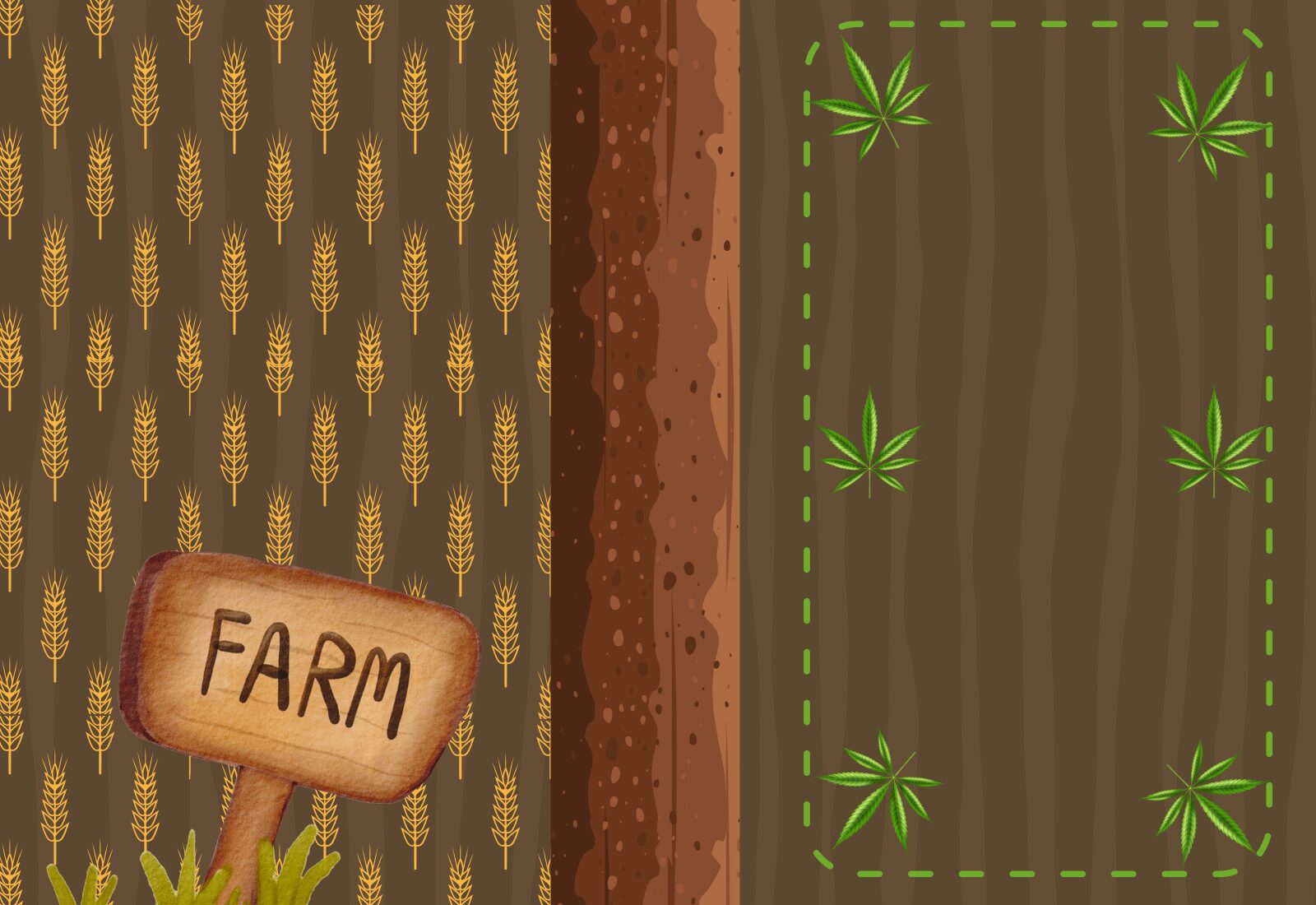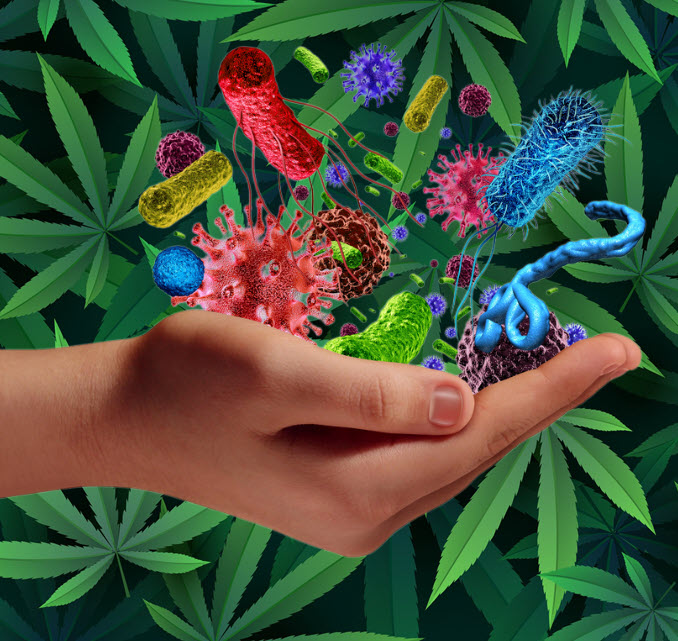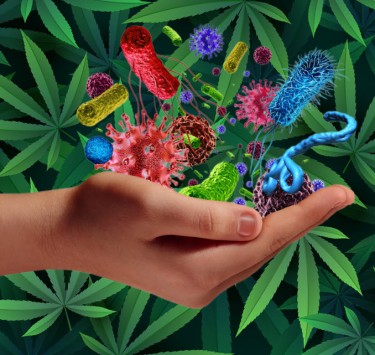Cannabis News
5 Clever Ways to Make Money in the Cannabis Space Using AI Technologies
Published
2 years agoon
By
admin

The cannabis industry is one of the fastest-growing industries in the world, and the potential for making money within this space is enormous. With advancements in technology, particularly in artificial intelligence (AI), there are numerous opportunities to capitalize on this trend. However, with so many AI technologies available in the market, it can be challenging to determine which ones are effective and profitable for your cannabis business.
That’s where we come in. In this article, we’re going to explore how AI technology can be leveraged to make money in the cannabis industry. We’ll discuss five unique ways that you can use AI technology to increase profits, attract more customers, and grow your business.
From writing to video creation, course development, merchandising, and tribe marketing, we’ll explore how these AI technologies can help you stay ahead of the competition and create new opportunities within the cannabis space. Whether you’re a cannabis business owner, entrepreneur, or investor, understanding how to use AI technology to your advantage can lead to significant financial rewards. So, let’s dive in and explore the exciting world of AI technology in the cannabis industry.
Now, I’ve been fascinated by all this AI junk, so you’re probably going to be hearing more about it from time to time. For now, my aim is to provide you with a good starting point on how you can make money.
How to Make Money with Writing
Using AI for writing has become a game-changer in the cannabis industry.
With AI tools such as Chat GPT and Copy.ai, even those who are not particularly skilled in writing can create compelling content. These tools can be especially helpful when it comes to writing books or blogs, which can be sold on platforms like Amazon’s Kindle or directly as a PDF on a website or blog.
Furthermore, bloggers can monetize their content through Google Adsense, which allows them to earn money by displaying ads on their website. For cannabis enthusiasts who have a wealth of knowledge in the industry, this presents a unique opportunity to turn that knowledge into written content and make a profit.
For instance, if you have experience growing some of the most potent and flavorful cannabis strains, you could create a book or write articles on sites like Substack to share your expertise with others in the cannabis community. By using AI for writing, you can create high-quality content that resonates with your audience and generates revenue for your cannabis business.
Of course, it’s important to note that while AI can write endlessly – it takes time and patience to make it good enough for “human consumption”. If you think you can just say, “Write me a book about X” and you’ll get a masterpiece – you’ll quickly learn why this isn’t true.
Moving on…
How to Make Money with Youtube/Video
Making money through YouTube or other video hosting sites can be a lucrative way to monetize your cannabis-related content. YouTube, in particular, offers a significant return on investment compared to other platforms such as Rumble. However, there are restrictions on the type of content that can be monetized, so it’s important to make sure your videos are compliant with YouTube’s guidelines.
One way to create monetizable content is to create an “educational channel” that breaks down the complexities of the cannabis plant, culture, and more. With AI tools like Chat GPT or Copy.ai, you can easily generate scripts that can be used for your videos. And if you don’t want to voice the scripts yourself, you can use text-to-voice services like 11Labs to create realistic-sounding voiceovers.
Editing is also a crucial aspect of video production, and sites like Veed.io make it incredibly easy to edit and streamline your videos. While there may be a monthly cost associated with these services, creating compelling content for one year and releasing 1-2 good videos relevant to your target audience can lead to passive income. Over time, this income can grow into thousands of dollars per month.
It’s important to note that building a following and making money through YouTube or other video hosting sites takes time and effort. But if you’re willing to put in the work, it can be a rewarding way to make money in the cannabis space while educating and engaging with your audience.
How to Make Money by Developing Courses
Creating a cannabis course can be a lucrative endeavor in the ever-growing cannabis industry. With the rise of online learning platforms like Teachable, it has never been easier to create, market and sell a course. The beauty of creating a course is that it can be created once and then generate passive income for years to come. However, creating a successful course requires a clear understanding of the target audience and their needs.
One of the keys to creating a successful cannabis course is to make it hyper-specific. For instance, creating a course that teaches people how to make the perfect infusion with their cannabis oils would be easier to sell than a course on how to grow cannabis. This is because the former would have less competition and would cater to a more specific audience. So, before creating a course, it’s important to research your target audience and their specific needs to ensure that your course will fill a gap in the market.
Once you have identified your target audience and the content of your course, it’s time to create the course material. AI tools like Chat GPT or sites like Copy.ai can help you create compelling content, even if you’re not an expert writer. These tools can generate scripts for videos or courses, making the course creation process faster and more efficient.
Marketing your course is also an important aspect of making money with cannabis courses. Social media is a powerful tool to promote your course, but it’s important to ensure that your messaging aligns with your target audience. You can also use paid advertising on social media platforms or search engines like Google to target specific demographics.
In conclusion, creating a cannabis course can be a profitable venture if done correctly. It’s important to identify a specific target audience, create hyper-specific content, and utilize AI tools to create compelling course material.
Additionally, marketing your course effectively is crucial to driving sales and generating passive income.
How to Make Money via Merchandising
Print-on-demand (POD) is a great way to monetize your creativity and passion in the cannabis space. The idea behind POD is that you don’t have to hold any inventory, rather you create designs that get printed on demand, as soon as someone places an order. You can create designs for t-shirts, hoodies, phone cases, hats, and other items.
This is where AI technology comes in. With tools like ChatGPT, you can brainstorm ideas and come up with unique designs that will appeal to your target audience. For example, you can use ChatGPT to come up with witty phrases or puns related to cannabis culture that you can then incorporate into your designs.
Once you have your design, you can use platforms like Society6 to create and sell your products. Society6 is a POD service that allows artists to upload their designs, which can then be printed on a variety of items like t-shirts, mugs, posters, and more.
Another tool that can help you create compelling designs is StableDiffusion, which is a platform that provides access to advanced AI models like DALL-E and Midjourney. These models can generate photorealistic images of unique designs that you can use for your merchandise.
When it comes to merchandising, the key is to create designs that are eye-catching and resonate with your target audience. With the help of AI tools like ChatGPT and StableDiffusion, you can come up with unique designs that will stand out from the crowd.
One important thing to keep in mind is that you should focus on creating designs that are unique and have a personal touch. This will help you establish your brand and stand out in a crowded market.
In addition to creating compelling designs, you can also use AI tools to help with marketing and promotion. For example, you can use social media listening tools to track conversations related to your brand and engage with potential customers. You can also use AI-powered chatbots to provide customer support and answer questions about your products.
Overall, merchandising is a great way to monetize your creativity and passion in the cannabis space. With the help of AI tools, you can create unique designs that resonate with your target audience and establish your brand in a crowded market.
How to Make Money with “Tribe Marketing”
I’m calling it Tribe Marketing because being an “influencer” sounds too invasive.
Tribe marketing is a highly effective approach to building a community of like-minded individuals who share your passion for cannabis. By leveraging AI tools, you can create compelling content that appeals to your target demographic, and build your audience across multiple platforms including email lists, Whatsapp Groups, Telegram Groups, Instagram, and YouTube.
To build a successful tribe, you must provide value to your audience on a consistent basis, with the aim of providing 80% valuable content and soft selling the remaining 20% of the time. By providing valuable content, you will build trust and loyalty with your audience, which will help you to grow your community over time.
One way to monetize your tribe is by creating a membership site where people can subscribe monthly to access exclusive content, resources, and offers. This is similar to an OnlyFans subscription, but for the cannabis industry.
To create engaging and relevant content, AI tools like ChatGPT can help you to generate ideas, plan your strategy, and conduct research. Additionally, platforms like StableDiffusion (which includes DALL-E and Midjourney) can be used to create compelling and unique visuals for your content, which will help to grab the attention of your target audience.
Ultimately, the key to success with tribe marketing in the cannabis industry is to identify a specific niche that is not being catered to and create content that is both informative and engaging. By building a loyal and engaged community around your passion for cannabis, you can turn your hobby into a sustainable source of income that allows you to do what you love while helping others in the process.
The Sticky Bottom Line
The cannabis industry is growing rapidly, and with the advancement of AI technology, there are countless ways to make money in this space. By leveraging tools like AI writing programs, video editing software, and print-on-demand platforms, you can create compelling content and merchandise that appeals to your target audience. Building a community of like-minded individuals is also essential in this industry, as it allows you to promote your products and services to those who are most likely to appreciate them.
In this age of abundance, thoughts are money, and the possibilities are endless. It takes hard work, dedication, and a willingness to learn, but with the right strategy and execution, anyone can turn their passion for cannabis into a profitable business. So whether you’re looking to start a side hustle or make a full-time career out of it, there’s never been a better time to chase your pipe dreams.
Don’t be afraid to take that first step and start exploring the opportunities that AI technology and the cannabis industry have to offer. With the right mindset and a commitment to excellence, you can turn your love for cannabis into a successful and rewarding career.
MORE ON AI IN CANNABIS, READ ON…
You may like
-


California Appeals Court Rejects Marijuana Grow Permit, Citing Federal Illegality
-


Expert Lighting Tips For Successful Indoor Growing Weed
-


Acne And CBD: Exploring Alternative Dermatological Solutions
-


Can I Gift Marijuana This Holiday Season?
-


The Best Cocktails For An Easy Festive Thanksgiving
-


420 Vacations: Planning the Perfect Weed Vacation
Cannabis News
California Appeals Court Rejects Marijuana Grow Permit, Citing Federal Illegality
Published
26 minutes agoon
November 22, 2024By
admin
In a landmark decision that highlights the tension between state and federal cannabis laws, a California appellate court ruled on October 29th that property owners can refuse to allow the transportation of cannabis across their land via easements, even when the cannabis operation is approved by local authorities.
The Second District Court of Appeal’s unanimous decision draws attention to private property rights in a context where cannabis remains federally illegal, but state law allows licensed cultivation, distribution and sale. Presiding Justice Albert Gilbert stated, “No matter how much California voters and the Legislature might try, cannabis cultivation and transportation are illegal in California as long as it remains illegal under federal law.” JCCrandall LLC v. County of Santa Barbara, Case No. B333201, 2024 WL 4599304, Oct. 29, 2024.
Unless the California Supreme Court grants review – which I would not rule out – the decision empowers private property owners to refuse to contract with cannabis businesses, and restricts local government from approving cannabis operations that implicate the property rights of neighbors who object.
The case at hand
The dispute centered around a cannabis cultivation operation in Santa Barbara County, where JCCrandall LLC challenged a conditional use permit granted by the County to its neighbor, Santa Rita Holdings Inc. The critical issue was that Santa Rita Holdings could only access its 2.5-acre cannabis farm via an unpaved road crossing JCCrandall’s property through a pre-existing easement. JCCrandall grows oats and barley.
JCCrandall’s primary concern? It raised a number of complaints with the Santa Barbara County Supervisors about truck traffic and night operations, which did not gain traction, but in the Court of Appeal JCCrandall focused on what it claimed was potential liability associated with having federally illegal substances transported across its property, even though County regulators found that the Santa Rita operation was fully compliant with state and local laws.
Key legal findings
The appellate court’s decision hinged on several crucial points:
- Property Rights: The court emphasized that “the right to exclude others is the essence of the right of property ownership” and classified it as a fundamental vested right.
- Federal Supremacy: The panel determined that allowing cannabis transportation across private property “defies the Supremacy Clause” of the U.S. Constitution.
- State vs. Federal Law: While cannabis might be legal under California law, the court ruled that federal law’s prohibition takes precedence in this context.
California cannabis industry implications
Legal experts suggest this ruling could have far-reaching consequences for California’s cannabis industry. Section 1550.5(b) of the California Civil Code makes contracts within California involving cannabis lawful and enforceable, and Santa Rita Holdings bet the ranch on that argument. But the Court of Appeal held that the statute could not compel a landowner to allow cannabis to travel across its property on a pre-existing easement. Licensed operators may find it harder to do business because neighbors who have property rights affected by a cannabis business can object, and, under the JCCrandall ruling, local government must yield to those objections.
An example might be a cannabis dispensary that depends on access to its parking lot via an easement or is located in a shopping center where other lessees have rights to object to tenants notwithstanding the approval of the landlord. In cultivation, many cannabis farms depend on vehicular access through easements because they are remote and do not always have direct access to public thoroughfares, or they depend on water sourced from other properties pursuant to agreements made by prior owners who grew traditional crops. These neighbors might not need to show any negative impact on their property, but can argue that they could be found complicit in federally illegal activities.
I think the most problematic language in the JCCrandall ruling is the following, which might draw the attention of the California Supreme Court and cause it to grant review: “For as long as an easement is enjoyed, its mode and manner of use shall remain substantially the same as it was at the time the easement was created. The County argues the easement was used for agricultural purposes. But there is a vast difference between legal and illegal agricultural purposes.” (Emphasis added.) If California has determined that cannabis cultivation is legal – as it has – and state courts routinely enforce contracts involving cannabis, it is a pretty bold step to declare the use of a lawful pre-existing easement illegal simply because the agricultural crop is cannabis and take away easement access from Santa Rita.
Looking ahead
This decision creates new challenges for cannabis businesses in California, and will result in more disputes among neighbors. While the Biden administration has shown signs of easing federal marijuana restrictions, this ruling demonstrates that the federal-state law conflict continues to create significant legal hurdles for the cannabis industry.
California court decisions also can be persuasive authority in other states, so we might see similar litigation (and decisions) elsewhere in the country where cannabis has been legalized.
The case serves as a reminder that despite California’s progressive stance on cannabis, federal prohibition continues to cast a long shadow over the industry’s operations and development. As the cannabis landscape continues to evolve, this ruling may prompt businesses to reassess their property arrangements and local governments will certainly have to reconsider their permitting processes to give more careful consideration to objections by neighbors who claim that their property rights are implicated by cannabis operations.
Note: This post was first published earlier this month on the Alger ADR Blog.
Cannabis News
Autoimmune Conditions Are Rising Fast in American Medicine, Can Cannabis Help?
Published
1 day agoon
November 21, 2024By
admin

Why Are Autoimmune Conditions On The Rise? And How Cannabis Can Help
Autoimmune diseases refer to a group of medical conditions that occur as a result of the immune system attacking your own tissues.
In a normal human body, the immune system is responsible for protecting the body by producing antibodies that prevent toxins, cancer cells, and viruses from harming the body. However, when one is struck by an autoimmune disorder, the immune system is no longer able to distinguish the difference between dangerous cells and healthy cells. As a result, the healthy cells are attacked, too.
Today, we know of around 100 different kinds of autoimmune conditions. Some of the most common examples of autoimmune conditions include rheumatoid arthritis (RA), lupus, inflammatory bowel disease, celiac disease, Type 1 diabetes, multiple sclerosis (MS), and the Guillain-Barre syndrome (GBS) to name a few. Others include Graves’ disease, Hashimoto’s thyroiditis, psoriasis, and vasculitis.
According to the National Health Council, around 50 million Americans are affected by autoimmune diseases today. This is a conservative estimate, considering that several autoimmune conditions are tricky to treat and so many people go undiagnosed for long periods of time. It’s worrisome to note that there are more people developing autoimmune diseases these days, many of which have reached levels comparable to epidemics.
But cannabis can help!
How Cannabis Can Help Curb And Manage Autoimmune Diseases
Not one single cause is responsible for the alarming growth of autoimmune diseases, though there are several factors at play. While there isn’t just one cause we can point at, it’s certain the reasons lie in our environment. After all, human genetics haven’t changed significantly yet the chemicals, toxins, and pollutants in our food and everyday items have risen dramatically.
In addition, people are getting less sleep than ever; stress rates are through the roof, and people are constantly worried. There is a clear link between psychological stress and physical health as well as immunity, which is why it isn’t unusual – it’s even common – to see many autoimmune disease cases flare up after people experience severe stress caused by grief, an accident, job loss, or the death of a loved one. These highly stressful and traumatic conditions wreak havoc on the body’s immune response, causing inflammation all over the body.
Conventional treatments prescribed to treat autoimmune conditions are focused on taming inflammation; these usually include steroids but also some non-steroidal drugs. These drugs often come with unwanted side effects, but research has shown that cannabis can work with the endocannabinoid system through THC and CBD, as well as other cannabinoids, to simulate similar results. In one study for example, we can see the clear association of the endocannabinoid system for neurodegenerative and inflammatory processes seen in Multiple Sclerosis and Amyotrophic Lateral Sclerosis.
There has also been an increasing number of studies proving the efficacy of cannabis for treating several autoimmune conditions.
Cannabis For Multiple Sclerosis
Multiple sclerosis is one of the autoimmune conditions where a growing number of studies have come out supporting the therapeutic benefits of cannabis for. In a 2024 study, patients with multiple sclerosis reported several improvements in quality of life after using cannabis-based medical products (CBMPs). For the study, British investigators analyzed the impact of cannabis based medicinal products made from either oil or extracts in 141 patients who were enrolled in the UK Medical Cannabis Registry.
The researchers then analyzed the changes in patient outcomes after a month, then three and 6 months after. According to the patients themselves, they were able to sustain improvements in their mental and physical health after marijuana therapy.
“This case series demonstrates a potential association between the initiation of CBMPs and improved patient reported outcomes in sleep, anxiety, and general HRQoL [health-related quality of life] measures, over six months,” said the study authors. “Additional measures for HRQoL, including various physical and mental health subdomains, also exhibit improvements up to six months when compared to baseline,” the authors concluded.
In another study from 2023, patients with multiple sclerosis reported significant improvements in symptoms after cannabis use. For the study, researchers from the Dent Neurologic Institute in Buffalo, New York, analyzed the medical records of 141 patients with multiple sclerosis, who were also legally authorized to consume medical marijuana products. They then analyzed data from the patients after one up to 4 follow-up sessions after the initial session of cannabis therapy. Sixty-five percent of patients consumed 1:1 THC:CBD tinctures.
According to the authors: “The results of this study indicate that use of MC [medical cannabis] to alleviate symptoms of MS is largely efficacious, with improvement in pain (72 percent of patients), muscle spasticity (48 percent of patients), and sleep disturbance (40 percent of patients) frequently reported.”
“More than half of opioid users at baseline were able to either discontinue or decrease their opioid use after starting MC. The mean daily MME [morphine milligram equivalents] was significantly reduced from the initial visit (51 mg) to the last follow-up visit (40 mg). This is consistent with previous literature showing that MC legalization is associated with decreased opioid use and that MC use is associated with decreased opioid use in patients with chronic pain. These findings indicate that MC may represent an alternative analgesic to opioids for some patients,” they wrote.
Anecdotal Evidence
While more studies are needed to determine cannabis’ effect on other autoimmune conditions such as rheumatoid arthritis, we can rely on anecdotal evidence. In 2020, data from the medical journal, Rheumatology, revealed that patients who have this condition, along with those who have lupus and fibromyalgia, consume cannabis.
In fact, it was reported that marijuana was extremely common especially for patients with fibromyalgia. “In this meta-analysis, we found that one in six patients suffering from rheumatologic disease actively consumes cannabis, reducing pain reduction… A favorable effect of cannabis on pain in our meta-analysis reinforces the idea that cannabis could be used for analgesic purposes,” the authors concluded.
Conclusion
Cannabis is a safe and natural way to help prevent and treat the symptoms of autoimmune disease. It targets inflammation at its root, and is a proven natural way to help cope with stress, pain, insomnia, and inflammation all while protecting the brain. However, it’s important to ensure you medicate with clean, organic sources of marijuana.
AUTOIMMUNE AND CANNABIS, READ ON…

The U.S. Senate’s version of the Farm Bill finally landed this week. They’re calling it the Rural Prosperity and Food Security Act of 2024 (the “Senate bill”). The Senate bill follows on the House’s proposal, called the Farm, Food and National Security Act of 2024 (the “House bill”), offered in May. Neither the Senate bill nor the House bill would preempt state or Indian law regarding hemp or the regulation of hemp products. This means states and tribes will retain a lot of latitude in regulating hemp and hemp-derived products– which gets people fired up.
Aside from giving states some runway, the Senate bill and the House bill differ in key respects regarding hemp. Therefore, these august bodies must confer and reconcile their sundry proposals. That could happen in 2024, but seems more likely in 2025 when the new Congress convenes. As of this week, though, we finally have a framework.
The Senate Bill re-defines “hemp” and defines “industrial hemp”
Section 10016 of the Senate bill (“Hemp Production”) amends the definition of “hemp.” Hemp was defined in the 2018 Farm Bill and removed from the federal Controlled Substances Act (CSA), taking us on a truly wild ride. See: What Happened to Hemp? (“What Happened”). The Senate bill also gives us a definition for “industrial hemp.” Here are those definitions, with points of emphasis in bold:
(1) Hemp. The term “hemp” means (A) the plant Cannabis sativa L. and any part of that plant, including the seeds thereof and all derivatives, extracts, cannabinoids, isomers, acids, salts, and salts of isomers, whether growing or not, with a delta-9 total tetrahydrocannabinol concentration (including tetrahydrocannabinolic acid) of not more than 0.3 percent on a dry weight basis; and (B) industrial hemp.
(3) Industrial Hemp. The term “industrial hemp” means the plant Cannabis sativa L. if the harvested material (A) is only (i) the stalks of that plant, fiber produced from those stalks, or any other manufactured product, derivative, mixture, or preparation of those stalks (except cannabinoid resin extracted from those stalks); (ii) whole grain, oil, cake, nut, hull, or any other compound, manufactured product, derivative, mixture, or preparation of the seeds of that plant (except cannabinoid resin extracted from the seeds of that plant); or (iii) viable seeds of that plant produced solely for production or manufacture of any material described in clause (i) or (ii); and (B) will not be used in the manufacturing or synthesis of natural or synthetic cannabinoid products.
The new regime
Again, the definitional stuff in bold is what I want to emphasize.
First, the Senate bill keeps the THC threshold at 0.3 percent, which is an arbitrary number we’ve been advocating against for years. The Senate bill mirrors the House bill in this respect, though, so we are stuck with this, unless Ron Paul gets his way.
Second, the Senate bill keeps the 2018 Farm Bill’s total THC standard, including THCA. The House bill does this too. This was fairly predictable: in What Happened, I wrote that we could “expect the total THC standard to remain, which means that actual Delta-9 THC won’t be the only metric for calculating THC content.”
We’ve also explained on this blog that the 2018 Farm Bill and USDA rules mandate total THC testing on pre-harvest hemp batches, but do not mandate such testing on post-harvest hemp or hemp products. The Senate bill doesn’t change this paradigm, which means the “loophole” for gas station weed remains open. This proposal is a big win for opponents of the House bill’s “Miller Amendment,” which would narrow the definition of “hemp” to exclude intoxicating hemp-derived substances.
Third, the Senate bill introduces a new definition and framework for industrial hemp. The House bill does this too, albeit slightly differently. The idea here is to invite farmers to grow hemp for fiber and grain purposes, while freeing them from regulatory burdens with the Department of Agriculture and criminal exposure with the Department of Justice. More specifically, for “industrial hemp” growers, the Senate bill:
- removes background check requirements;
- instates “relaxed regulatory requirements” for sampling and inspection methodologies (which will need to be adopted by rule); and
- develops a certified seed program.
The Senate bill also makes any hemp producer ineligible to grow hemp for five years if that producer, “with a culpable mental state greater than negligence, produces a crop of hemp that is inconsistent with that license.”(Hint: use the seed program.) The proof standard here seems like it could be an issue, and even if anyone has been adjudicated as growing marijuana under the guise of hemp, Farm Bill ineligibility seems like a far-off concern.
Bottom line
The big takeaway for me is that the Senate bill leaves the door open for intoxicating hemp products, whereas the Miller Amendment to the House bill does not. Something’s gotta give. And it needs to happen soon, because we’re already long overdue. As I explained in a webinar last week, the Farm Bill deals with the nation’s entire food supply, not just hemp. Therefore, this is not like with the SAFE Banking Act, where we have a proposed law specific to cannabis that may or may not ever pass. The Farm Bill must pass, and soon.
Stay tuned and we’ll keep you updated on any major happenings. For more on this topic, check out our massive hemp and CBD archive, or these specific, recent posts:

California Appeals Court Rejects Marijuana Grow Permit, Citing Federal Illegality

Expert Lighting Tips For Successful Indoor Growing Weed

Acne And CBD: Exploring Alternative Dermatological Solutions

Can I Gift Marijuana This Holiday Season?

The Best Cocktails For An Easy Festive Thanksgiving

420 Vacations: Planning the Perfect Weed Vacation

Can Microdosing Help Manage Holiday Family Anxiety

11 Weed Shows and Movies on Netflix Worth Watching

Lawsuit Says DEA Acting In Bad Faith Over Marijuana

Autoimmune Conditions Are Rising Fast in American Medicine, Can Cannabis Help?

Distressed Cannabis Business Takeaways – Canna Law Blog™

United States: Alex Malyshev And Melinda Fellner Discuss The Intersection Of Tax And Cannabis In New Video Series – Part VI: Licensing (Video)

What you Need to Know

Drug Testing for Marijuana – The Joint Blog

NCIA Write About Their Equity Scholarship Program

It has been a wild news week – here’s how CBD and weed can help you relax

Cannabis, alcohol firm SNDL loses CA$372.4 million in 2022

A new April 20 cannabis contest includes a $40,000 purse

Your Go-To Source for Cannabis Logos and Designs

UArizona launches online cannabis compliance online course
Trending
-

 Cannabis News2 years ago
Cannabis News2 years agoDistressed Cannabis Business Takeaways – Canna Law Blog™
-

 One-Hit Wonders2 years ago
One-Hit Wonders2 years agoUnited States: Alex Malyshev And Melinda Fellner Discuss The Intersection Of Tax And Cannabis In New Video Series – Part VI: Licensing (Video)
-

 Cannabis 1012 years ago
Cannabis 1012 years agoWhat you Need to Know
-

 drug testing11 months ago
drug testing11 months agoDrug Testing for Marijuana – The Joint Blog
-

 Education2 years ago
Education2 years agoNCIA Write About Their Equity Scholarship Program
-

 Cannabis2 years ago
Cannabis2 years agoIt has been a wild news week – here’s how CBD and weed can help you relax
-

 Marijuana Business Daily2 years ago
Marijuana Business Daily2 years agoCannabis, alcohol firm SNDL loses CA$372.4 million in 2022
-

 California2 years ago
California2 years agoA new April 20 cannabis contest includes a $40,000 purse





